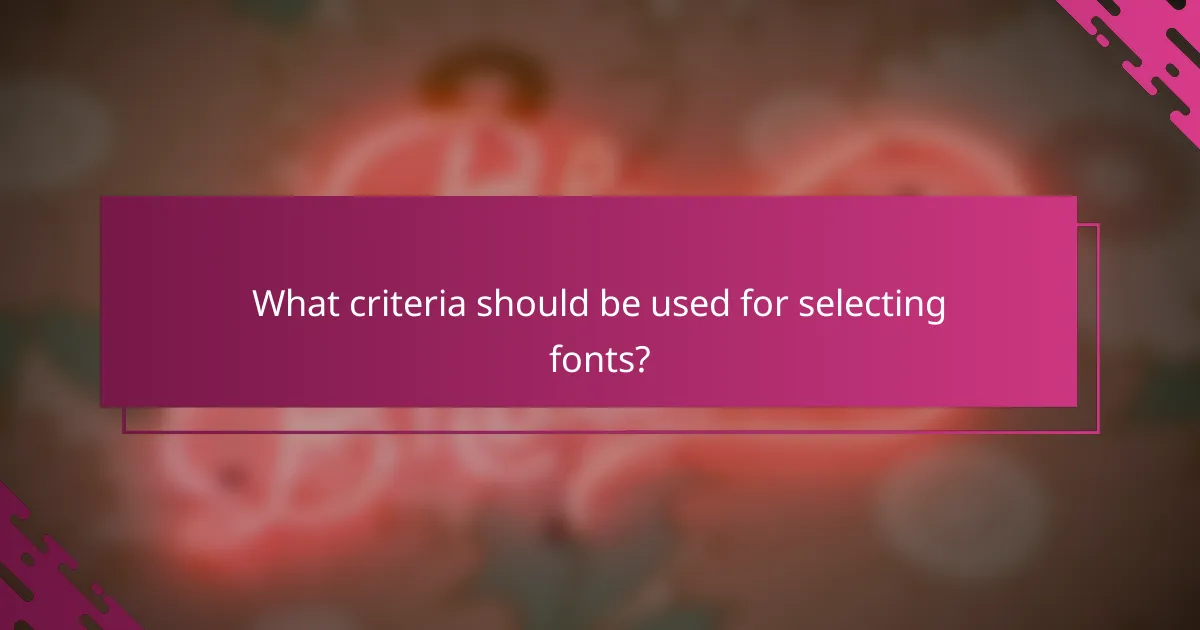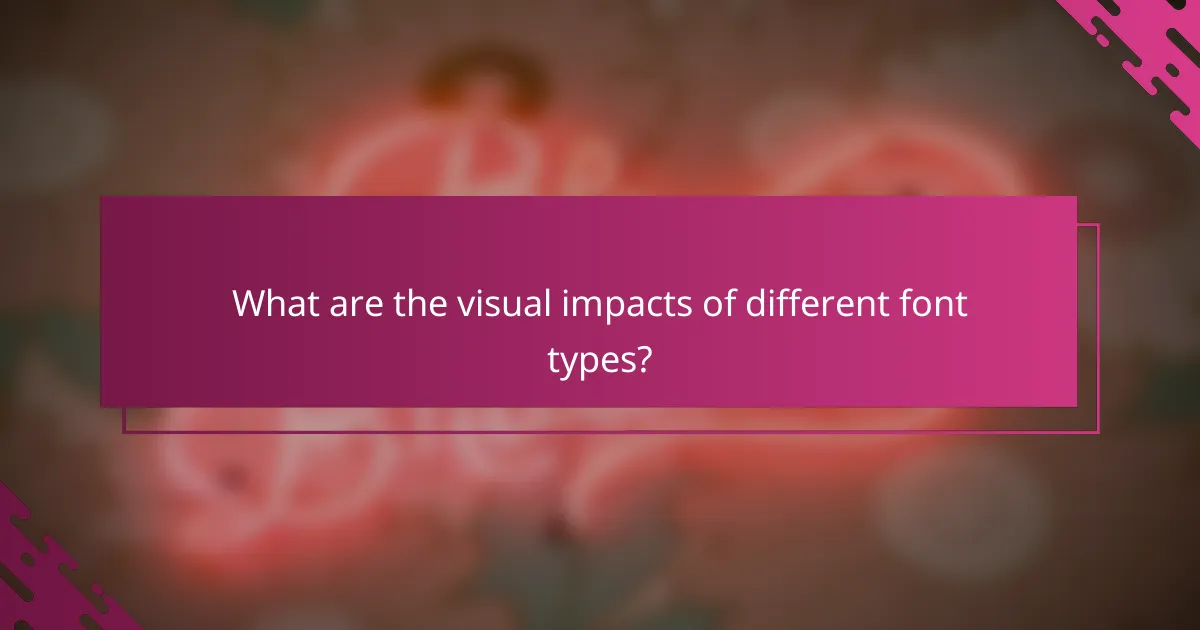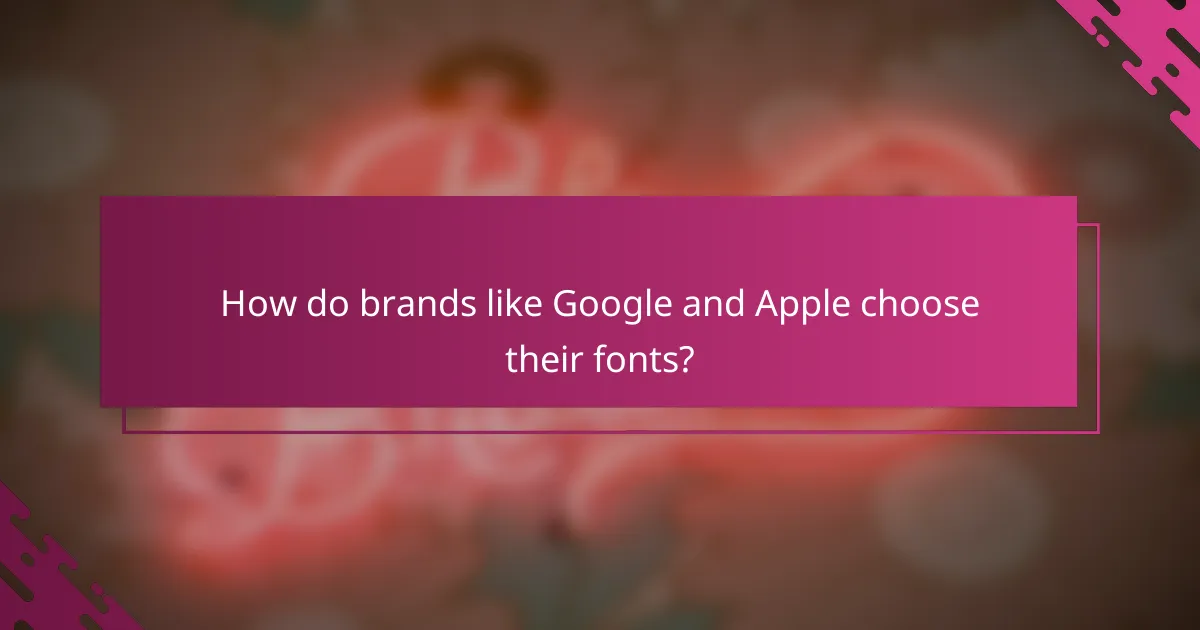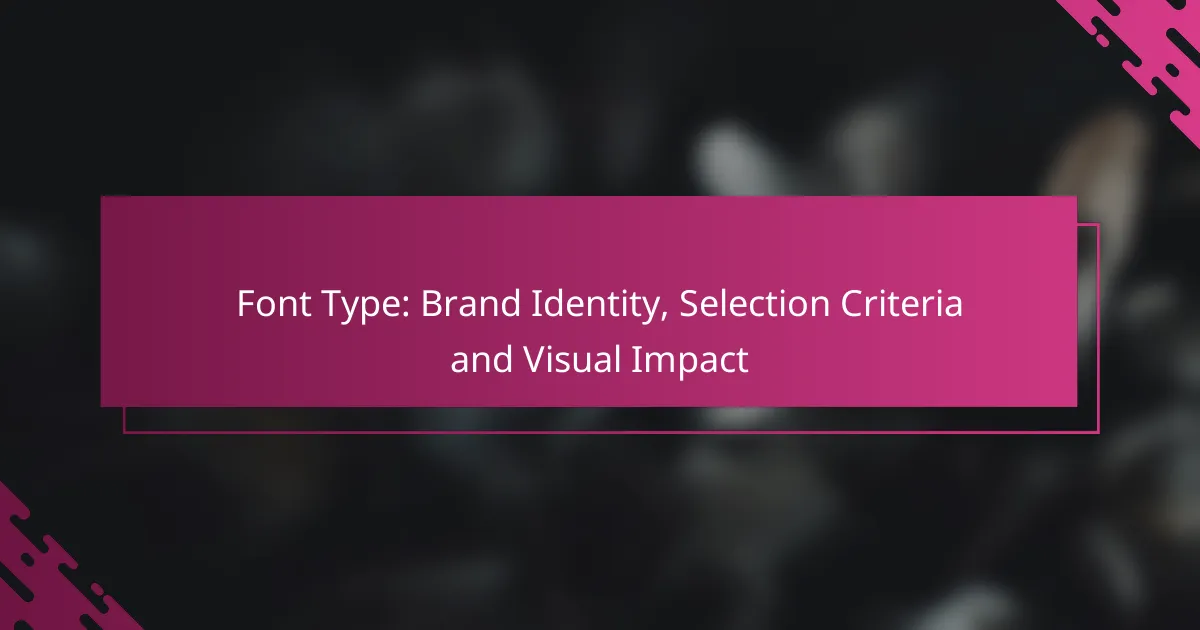Font type plays a pivotal role in shaping brand identity, as it visually encapsulates a company’s values and personality. The selection of an appropriate font not only affects readability but also influences emotional responses and brand perception, making it essential for effective communication with the target audience.

How does font type influence brand identity?
Font type significantly shapes brand identity by visually representing a company’s values and personality. The choice of font can evoke specific emotions and associations, making it a crucial element in how a brand is perceived by its audience.
Font type conveys brand personality
The font type selected for a brand can communicate its personality traits effectively. For instance, a modern sans-serif font may suggest innovation and simplicity, while a classic serif font can convey tradition and reliability. Brands often choose fonts that align with their core values to reinforce their identity.
Consider the font choices of well-known brands: Coca-Cola uses a flowing script to evoke nostalgia and friendliness, whereas tech companies like Google opt for clean, geometric fonts to reflect a forward-thinking approach. This alignment helps create a cohesive brand image.
Font type impacts customer perception
Font type can significantly influence how customers perceive a brand’s credibility and professionalism. A well-chosen font can enhance trust, while a poorly selected one may lead to skepticism. Research indicates that consumers often associate specific fonts with quality and reliability.
For example, a luxury brand might use an elegant serif font to evoke sophistication, while a playful brand may choose a whimsical typeface to appear approachable. Understanding your target audience’s preferences is essential when selecting a font that aligns with their expectations.
Font type enhances brand recognition
Consistent use of a specific font type can enhance brand recognition over time. When consumers repeatedly see the same font associated with a brand, it becomes a visual cue that helps them identify the brand quickly. This recognition can lead to increased loyalty and preference.
To maximize brand recognition, companies should maintain consistency across all marketing materials, including websites, advertisements, and packaging. A well-defined typography style guide can help ensure that the chosen font is used uniformly, reinforcing the brand’s identity in the minds of consumers.

What criteria should be used for selecting fonts?
Selecting fonts involves evaluating several criteria to ensure they effectively convey your brand identity. Key factors include readability, alignment with brand messaging, and preferences of the target audience.
Readability and legibility
Readability refers to how easily text can be read, while legibility focuses on how distinguishable individual characters are. Choose fonts that are clear and easy to read at various sizes, particularly for body text. Sans-serif fonts are often preferred for digital content due to their clean lines.
Consider using a font size of at least 12px for body text and larger sizes for headings. Test your font choices on different devices to ensure consistent readability across platforms.
Brand alignment and messaging
The selected font should reflect your brand’s personality and values. For example, a tech company might opt for modern, sleek fonts, while a luxury brand may choose elegant, serif fonts. The font should complement your logo and overall visual identity.
Ensure that the font style aligns with the message you want to convey. A playful brand might use rounded fonts, while a more serious brand might prefer traditional, structured fonts. Consistency in font usage across all materials reinforces brand recognition.
Target audience preferences
Understanding your target audience is crucial when selecting fonts. Different demographics may have varying preferences for font styles based on age, culture, and industry. For instance, younger audiences may favor trendy, informal fonts, while older audiences might prefer classic styles.
Conduct surveys or focus groups to gather insights on font preferences from your audience. Additionally, analyze competitors’ font choices to identify trends and ensure your selection stands out while still appealing to your target market.

What are the visual impacts of different font types?
Different font types significantly influence brand perception and readability. The choice of font can evoke emotions, convey professionalism, and enhance or detract from the overall visual impact of a design.
Serif vs. sans-serif effects
Serif fonts, characterized by small decorative strokes at the ends of letters, often convey tradition and reliability. They are commonly used in print media and formal contexts, making them suitable for brands seeking to establish authority.
In contrast, sans-serif fonts lack these embellishments and tend to appear more modern and clean. They are frequently used in digital media, appealing to a younger audience and brands aiming for a contemporary image.
Impact of font weight and style
Font weight refers to the thickness of the characters, which can affect readability and emphasis. Bold fonts draw attention and can highlight key messages, while lighter weights may convey elegance and simplicity.
Additionally, styles such as italic or oblique can add personality to text. However, overusing varied weights and styles can lead to visual clutter, so it’s essential to maintain a balance that aligns with the brand identity.
Color and font combinations
The combination of color and font type can enhance or undermine the intended message. High contrast between text and background colors improves readability, while harmonious color schemes can create a cohesive look.
When selecting colors, consider the psychological effects they may have. For example, blue often conveys trust, while red can evoke excitement. Testing combinations can help ensure that the visual impact aligns with brand goals.

How do brands like Google and Apple choose their fonts?
Brands like Google and Apple select their fonts based on key factors such as versatility, clarity, and brand identity. These choices reflect their core values and enhance user experience across various platforms.
Google’s use of Roboto for versatility
Google employs the Roboto font to achieve a balance between modern aesthetics and functionality. This font is designed to be highly legible on both screens and print, making it suitable for a wide range of applications, from web interfaces to advertising materials.
Roboto’s versatility allows Google to maintain a consistent brand identity while adapting to different contexts. The font family includes various weights and styles, enabling designers to create a cohesive look across different products and services.
Apple’s emphasis on clarity with San Francisco
Apple’s choice of the San Francisco font prioritizes clarity and readability, particularly on digital devices. This font is optimized for legibility at various sizes, ensuring that text remains clear whether viewed on an iPhone or a MacBook.
San Francisco’s design incorporates features that enhance user experience, such as generous spacing and a clean appearance. This focus on clarity reinforces Apple’s commitment to simplicity and usability, aligning with their overall design philosophy.

What are the best practices for font pairing?
Effective font pairing enhances brand identity and visual impact by creating a harmonious relationship between different typefaces. Best practices include selecting complementary styles, ensuring contrast in sizes, and maintaining consistency across various platforms.
Complementary font styles
Choosing complementary font styles is crucial for creating a cohesive look. Pair a serif font with a sans-serif font to balance tradition and modernity, or mix a bold typeface with a lighter one for visual interest. Aim for a maximum of two to three fonts to avoid clutter and confusion.
For example, a classic serif font like Times New Roman can work well with a clean sans-serif like Arial. This combination allows for clear differentiation between headings and body text, enhancing readability.
Contrast in font sizes
Contrast in font sizes helps establish a clear hierarchy in your content. Use larger sizes for headings and smaller sizes for body text to guide the reader’s attention effectively. A common practice is to make headings about 1.5 to 2 times larger than the body text.
For instance, if your body text is set at 16px, consider using 24px to 32px for headings. This size difference not only improves legibility but also creates a visual rhythm that can engage the audience.
Consistency across platforms
Maintaining consistency across platforms ensures that your brand identity remains recognizable. Use the same font pairings and sizes on your website, social media, and printed materials to create a unified experience. This consistency reinforces brand recognition and trust.
To achieve this, create a style guide that outlines your font choices, sizes, and usage examples. This guide can help team members adhere to the established standards, ensuring that all communications reflect the same visual identity.

What tools can assist in font selection?
Several tools can help streamline the font selection process, ensuring that the chosen typeface aligns with brand identity and visual impact. These tools range from online font libraries to design software that offers previews and comparisons.
Online Font Libraries
Online font libraries like Google Fonts and Adobe Fonts provide extensive collections of typefaces that can be filtered by style, popularity, and usage. These platforms often allow users to preview how text looks in different fonts, making it easier to visualize the impact on brand identity.
When using these libraries, consider the licensing agreements, as some fonts may require a fee for commercial use. Always check if the font supports the necessary character sets for your target audience.
Design Software
Design software such as Adobe Illustrator or Canva includes built-in font selection tools that enable users to test various typefaces directly within their projects. This hands-on approach allows for immediate visual feedback on how different fonts interact with design elements.
Utilizing design software can also help in assessing the readability and aesthetic appeal of fonts in various sizes and contexts, ensuring that the final choice enhances the overall visual impact.
Font Pairing Tools
Font pairing tools like Fontjoy or Typewolf assist in selecting complementary typefaces that work well together. These tools often generate combinations based on established design principles, helping to maintain a cohesive brand identity.
When using font pairing tools, aim for contrast between headings and body text to enhance readability while ensuring that the overall look aligns with your brand’s personality.
